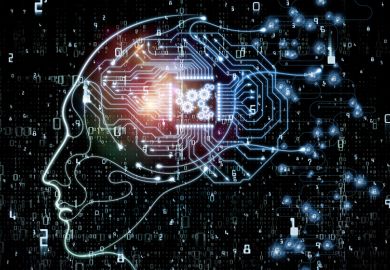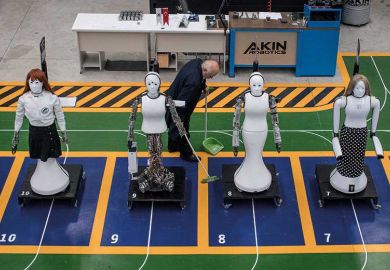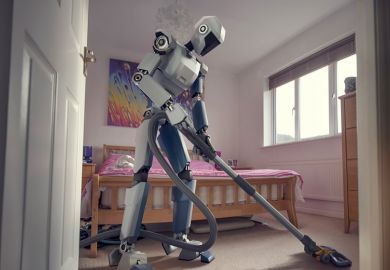The automation of professional expertise is at a tipping point – and education may be the next to succumb. Machine learning (often loosely referred to as AI) lies at the heart of this transformation. It makes possible the automation of judgements that usually rely on teachers’ accumulated wisdom.
Neil Selwyn’s book is a measured and accessible discussion of how new computational tools might change or diminish a teacher’s professional expertise in both knowledge and relationships. He argues that a wider critical debate about the impact of automation in crucial areas such as assessment, pastoral support and content teaching is overdue, because “it is worrying that…[it] is not already provoking great consternation and debate throughout education”.
While the traditional boundaries of the management and organisation of higher education have been opened to the influence and investment of many external agencies and entrepreneurs, the pace of change may still be regarded by many as too slow. Change is certainly needed, but it can leave the education profession vulnerable to bad ideas as well as introducing it to good. Unless we pay attention, the automation of teaching could lead to the diminishment of teachers and student learning everywhere.
For example, in higher education, “intelligent agents” (aka chatbots) are already making their mark in responding conversationally to student enquiries. These purportedly improve student engagement and motivation (and can even offer counselling support) while freeing tutors or administrators from supposedly burdensome FAQs about course content and related issues. Time-saving is often a key marketing pitch, but the effectiveness of these software machines is less well understood and the promised efficiency may be illusory.
The use of Turnitin to detect plagiarism in student assignments seems, on the face of it, a boon to assessment quality. However, this illustrates the potential risks associated with such automation. First, all student writing is treated as a potential instance of fraud – and this undermines the crucial bond of trust between teacher and student. Second, Turnitin’s ongoing development is bringing us to a tipping point where, by applying machine learning to a student’s writing style, the value of an educator’s expertise is diminished. Such a tool may (or may not) lead to improvements in plagiarism detection, but it surely represents a first step in the automation of judgement that can subvert a key element of academic expertise.
Selwyn has little to say about how these technologies find their way into our classrooms, workshops and lecture halls. What kind of policymaking processes drive their introduction? The usual forms seem to have given way to influential organisational and corporate networks such as Apple, Microsoft and Google, which are able to influence practice directly with tempting technologies and considerable investment.
This book is timely. The extraordinarily rapid emergence of influential AI-based technologies in higher education should generate significant debate and help us to keep ahead of the machines. “Debates about AI and education need to move on from concerns over getting AI to work like a human teacher,” writes Selwyn. “The question, instead, should be about distinctly non-human forms of AI-driven technologies that could be imagined, planned and created for educational purposes.”
While it is not clear what such “distinctly non-human forms” might look like or be capable of, this is an important idea. Teachers need to work together with machines “on their own terms” to improve the quality of education. Above all, for this partnership to work, educators must ensure that they have a clear and articulate voice that guides the changing technological landscape of professional practice.
David Longman is an independent educational consultant.
Should Robots Replace Teachers?
By Neil Selwyn
Polity Press, 160pp, £35.00 and £9.99
ISBN 9781509528950 and 9781509528967
Published 6 September 2019
Register to continue
Why register?
- Registration is free and only takes a moment
- Once registered, you can read 3 articles a month
- Sign up for our newsletter
Subscribe
Or subscribe for unlimited access to:
- Unlimited access to news, views, insights & reviews
- Digital editions
- Digital access to THE’s university and college rankings analysis
Already registered or a current subscriber?








